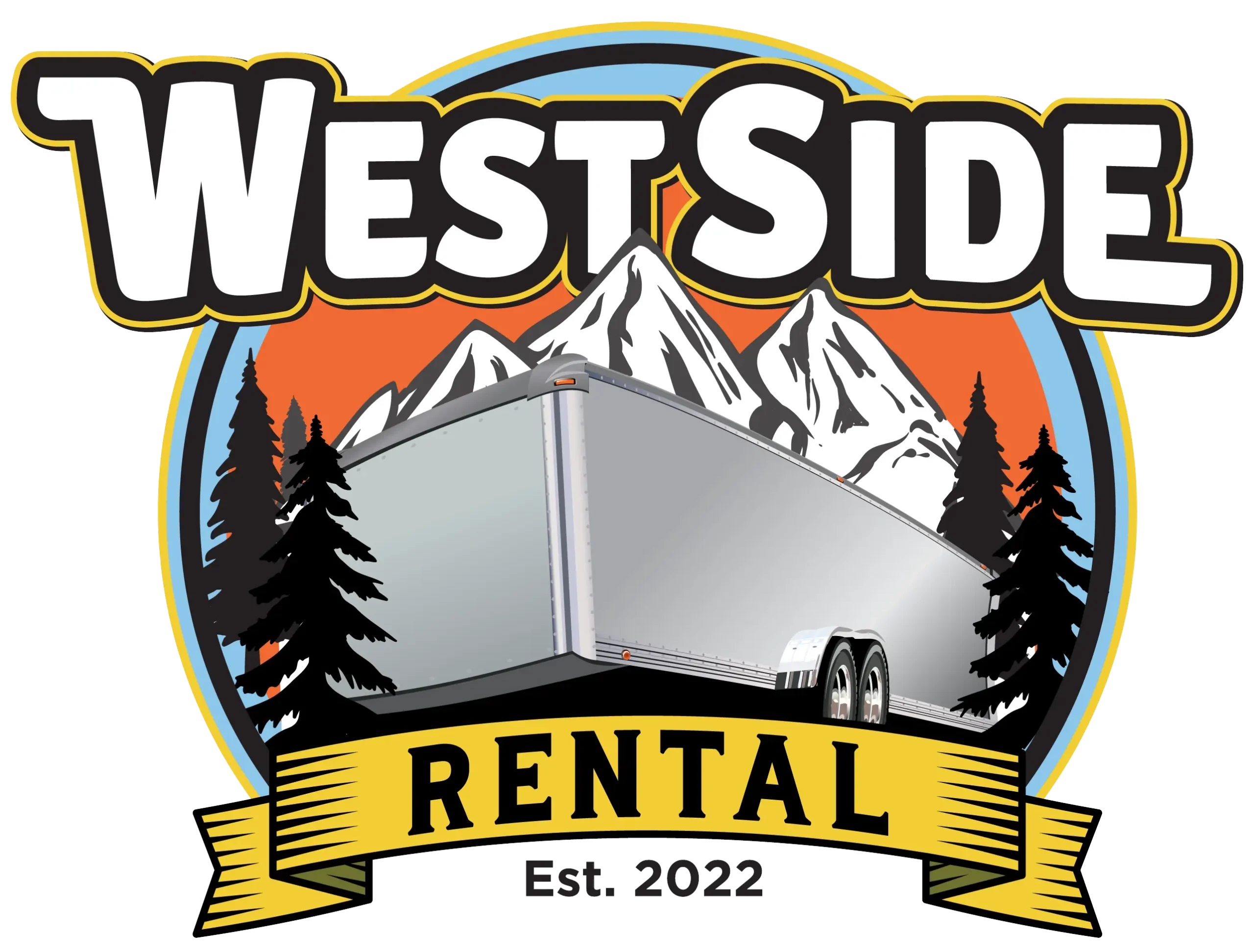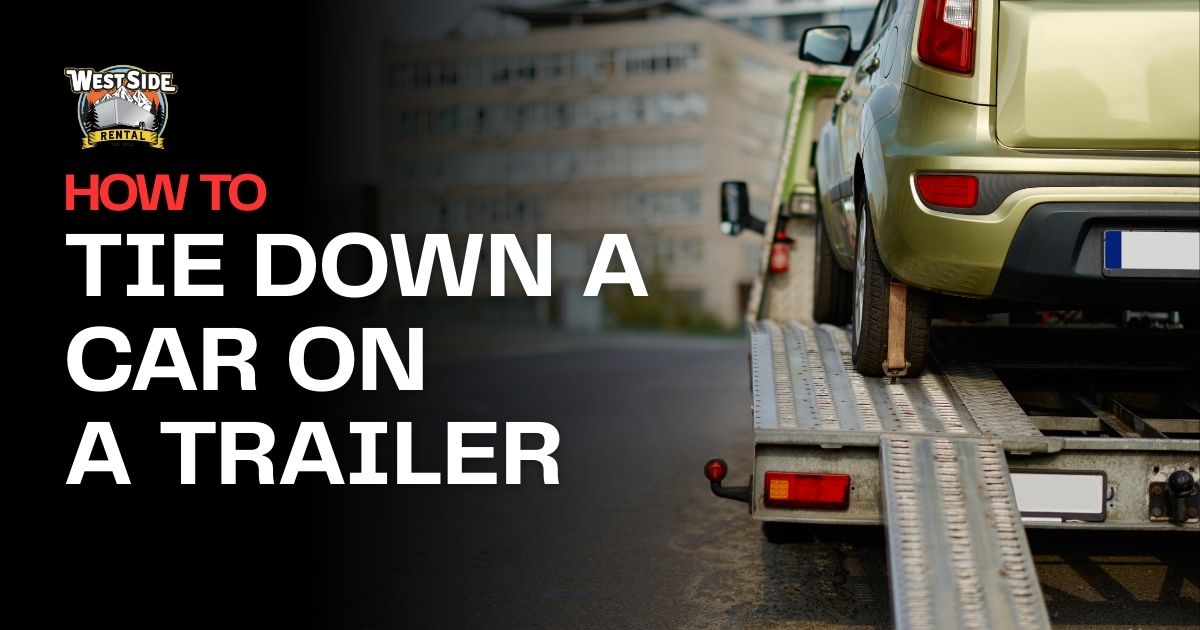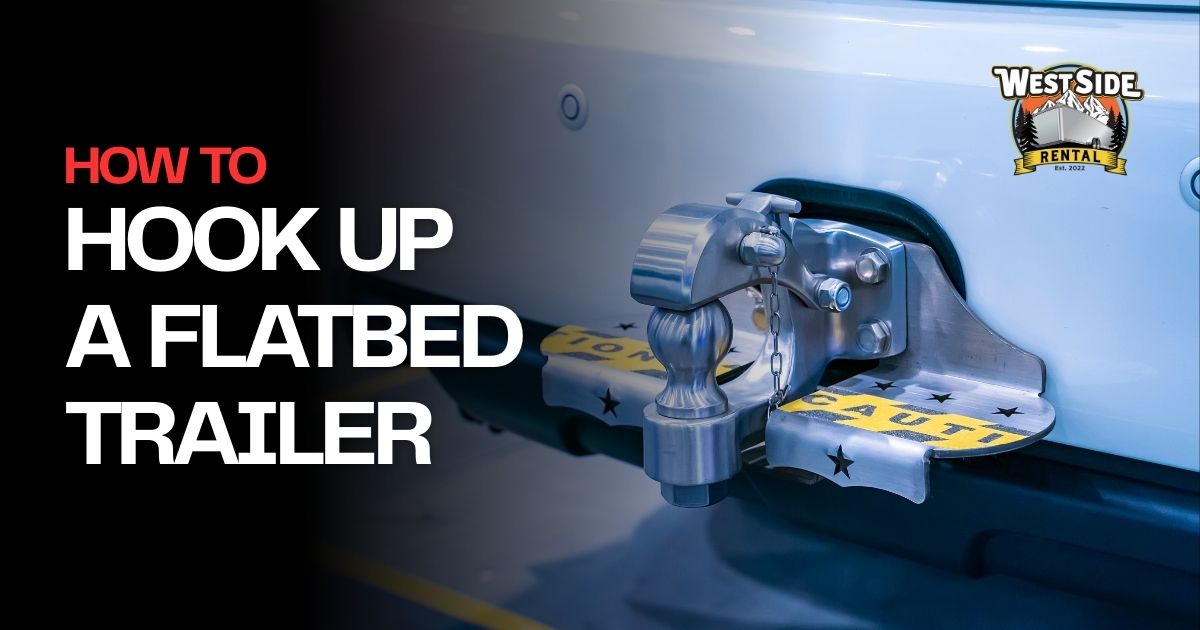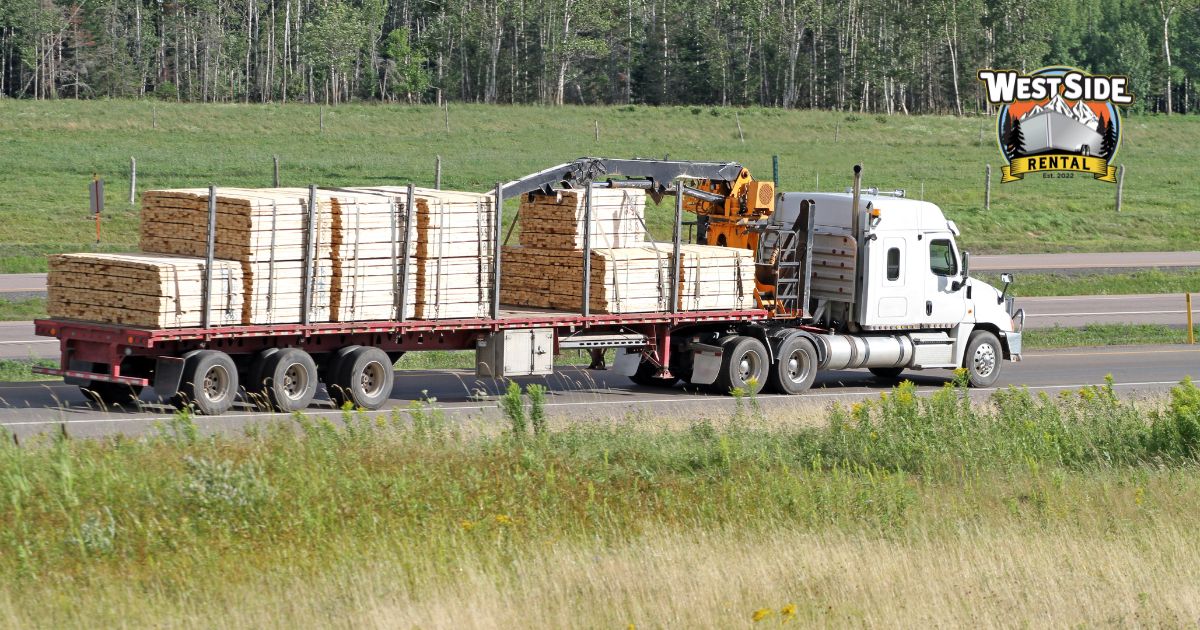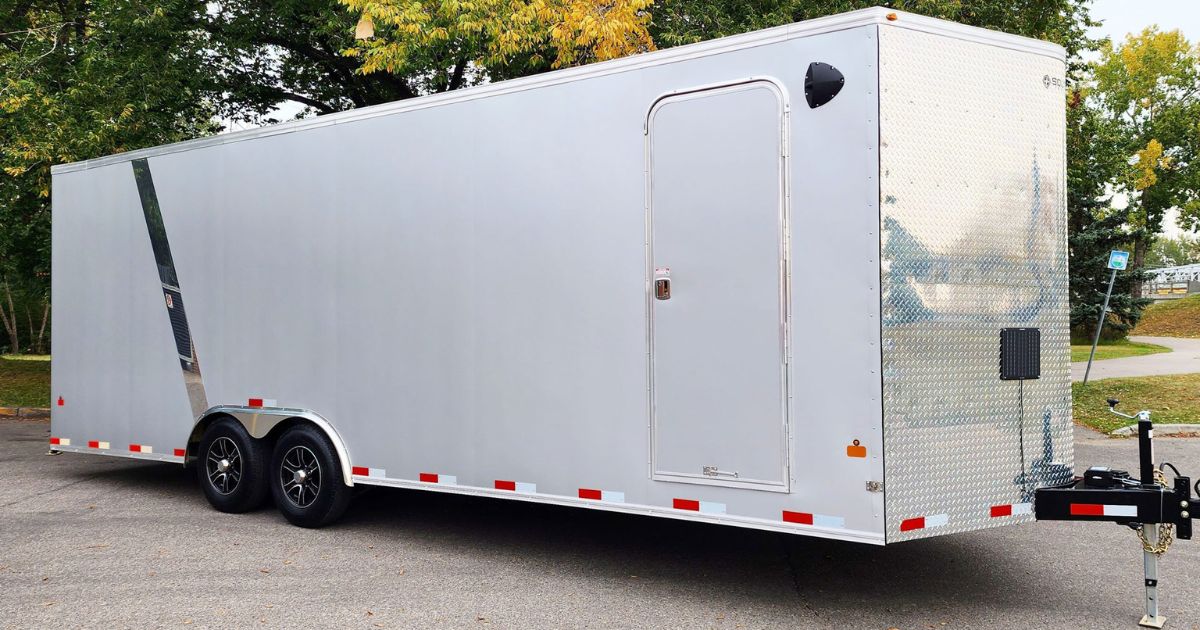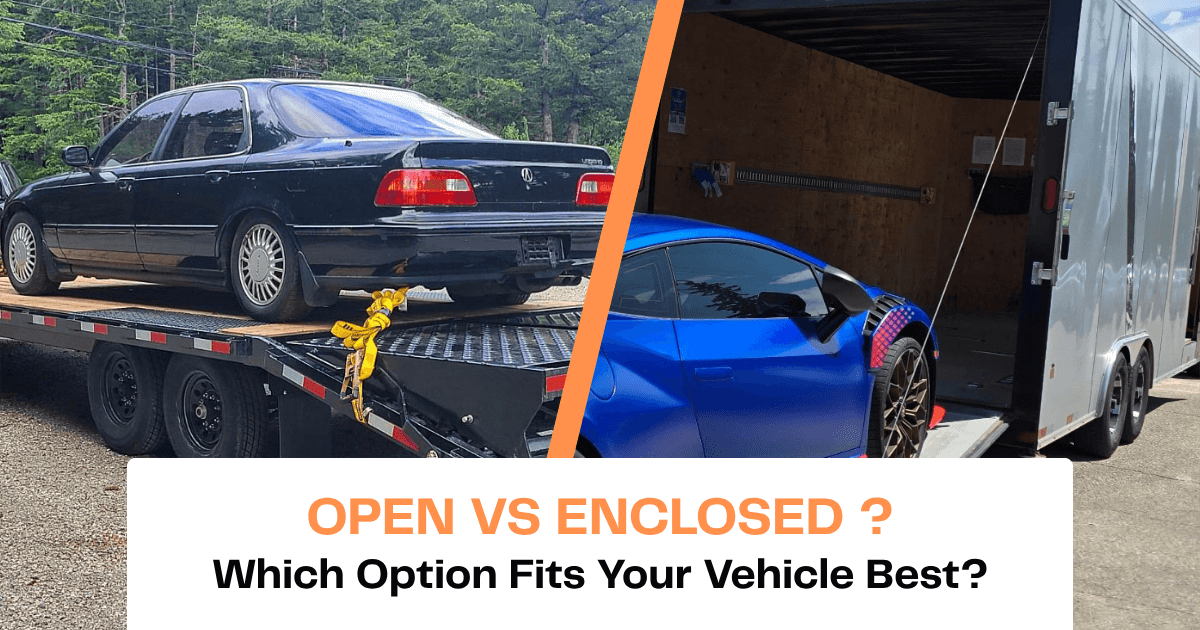
How to Load a Trailer the Right Way – Step-by-Step Guide
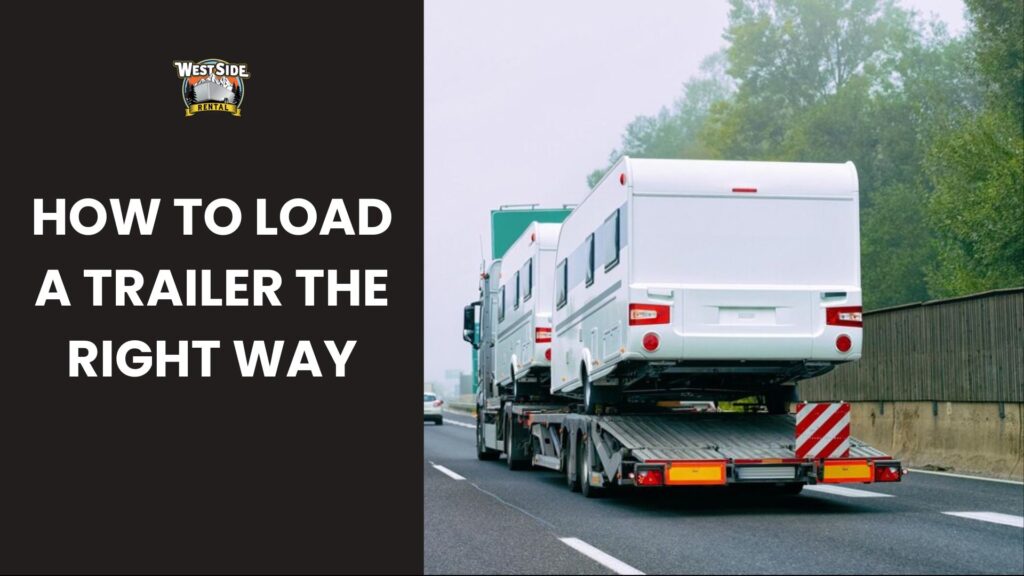
- July 29, 2025
- Towing Tips
- seo-manager
Most trailer accidents or loss of control happen because of bad loading. Scary, right? Don’t let that happen to you. Loading a trailer isn’t just about stacking things and driving off. You need to balance the load between the front and back.
Towing a trailer is much easier when it’s loaded the right way. Aim for about 60% of the weight in the front and 40% in the back, and keep the lighter items on top.
Whether you’re using an enclosed, flatbed, or utility trailer, this guide will help you load it safely for a smooth ride.
Understanding Trailer Basics Before Loading
Not every trailer is built for the same job, or can be loaded the same way. But the fundamentals are the same, you just need to keep an eye on them to make safe loading.
Every trailer also has its own towing capacity and weight limits. So before you load anything, make sure you’ve picked the right trailer size for your job.
There are a few key numbers you should know:
- GVWR – This is the maximum total weight your trailer can handle (including the trailer itself and the cargo).
- Payload – How much cargo weight you can safely add.
- Tongue Weight – The amount of downward pressure your trailer puts on your vehicle’s hitch.
We currently offer 4 types of trailers:
- Enclosed Trailers – Fully covered to protect your cargo from weather or theft.
- Flatbed Trailers – Open and flat, perfect for big or odd-shaped items.
- Utility Trailers – Small, open trailers for lighter loads.
- Dump Trailers – Built for loose stuff like gravel, sand, or dirt.
💡 Editor Note: Never guess your trailer’s limits. Overloading or uneven loading is one of the top causes of trailer accidents. Always double-check your trailer specs and load smart , your safety depends on it.
How to Load a Trailer Step-by-Step
- Park on a Level Surface
- Secure with Wheel Chocks
- Apply the 60/40 Rule
- Load Heavy Items First
- Balance Weight Side-to-Side
- Place Light or Fragile Items on Top
- Tie Down and Secure the Load
- Connect Hitch and Check Lights
Step by step load your trailer safely and efficiently
Step 1: Calculate the Correct Towing Weight
Before you rent the trailer, figure out how much weight you’re working with. Check your trailer’s GVWR (Gross Vehicle Weight Rating) and your vehicle’s towing capacity. These numbers tell you the maximum weight you can safely tow. If you load too much, you’re risking damage to your vehicle, poor braking, or even losing control.
Step 2: Park on a Level Surface
Find a flat & surface place to park your trailer. This gives you a stable base and helps prevent rolling or tipping while you load. Avoid sloped driveways or uneven ground.
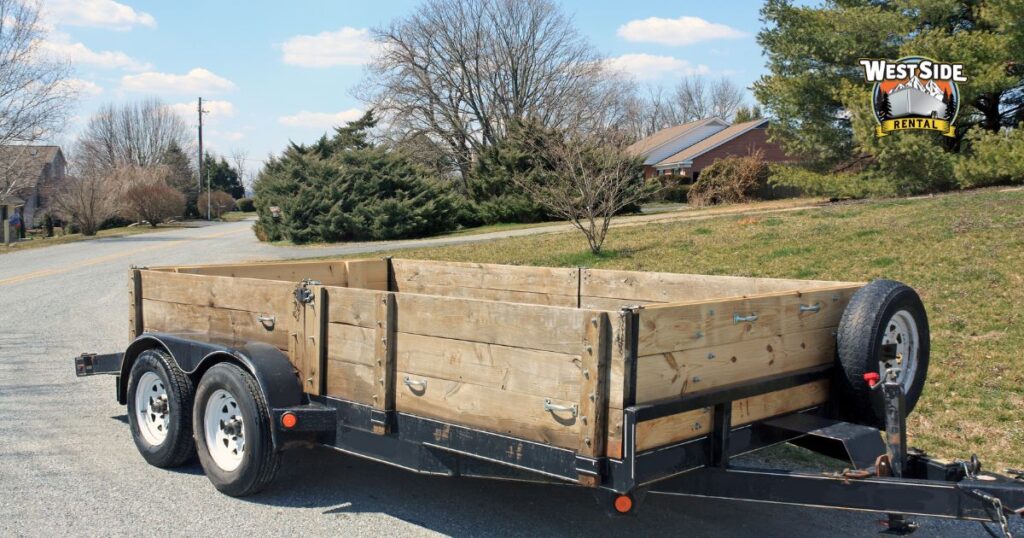
Step 3: Secure with Wheel Chocks
Once parked the trailer on the flat surface, use wheel chocks to block the trailer wheels. It will keep your trailer stable from from moving while you’re loading.
You can also hitch your trailer to your vehicle before loading. Make sure the vehicle is in park and the emergency brake is on. This adds extra stability and helps keep everything in place.
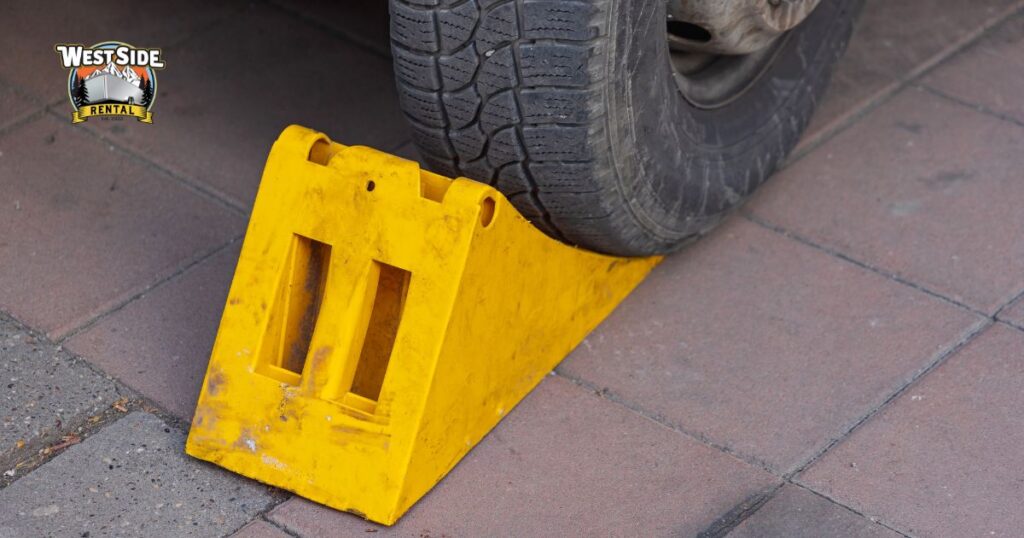
⚠️ Attention: The hitch is mainly used to connect the trailer to your vehicle while towing. But keeping the trailer hitched during loading also helps keep it stable.
We recommend always using wheel chocks while loading to make sure the trailer stays safely in place.
Step 4: Apply the 60/40 Rule
When loading your cargo, follow the 60/40 rule. This means 60% of the total cargo weight should be in front of the trailer’s axle, and 40% behind it.
This helps keep the tongue weight balanced and reduces the risk of sway while driving.
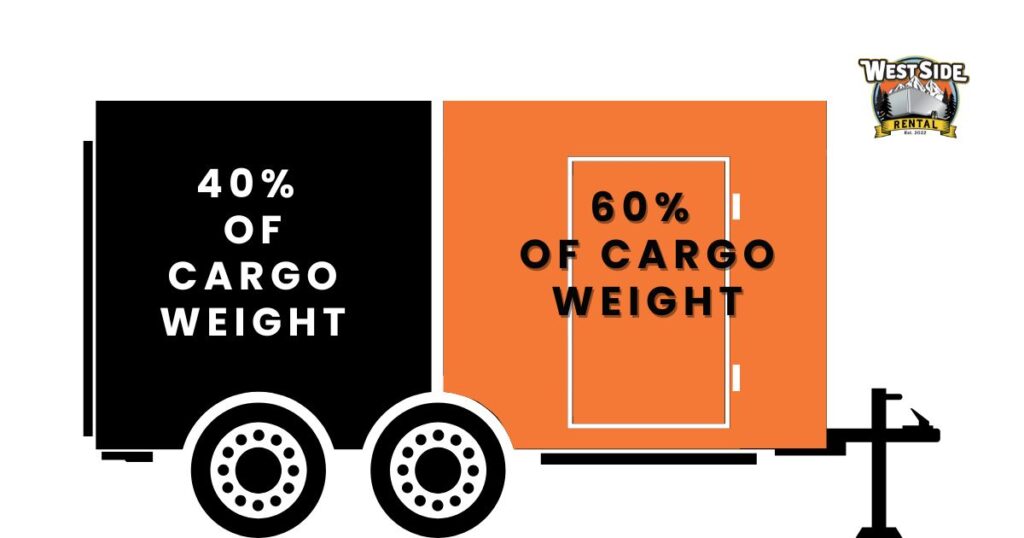
Step 5: Load Heavy Items First
Always load your heaviest items first. Keep them low to the floor and close to the axle. This keeps the trailer’s center of gravity low, which is important for safe handling and better control while towing. Otherwise, your trailer goes at risk on the road like the example.
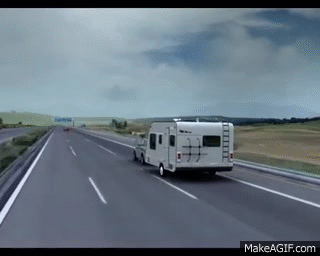
Step 6: Balance Weight Side-to-Side
A common mistake is putting more weight on one side than the other. Unbalanced side-to-side loading can cause the trailer to lean, pull, or sway. Always check that the weight is evenly spread across both sides.
Step 7: Place Light or Fragile Items on Top
Now that your heavy gear is in place, stack lighter or more delicate items on top or in empty corners. This helps avoid crushing and keeps them protected during the trip.
Step 8: Tie Down and Secure the Load
Once your trailer is loaded safely, don’t forget to tie it all down. Use ratchet straps, rope, or bungee cords to stop things from shifting.
If you’re using an open trailer, cover the load with a tarp to protect it from wind, dust, or rain.
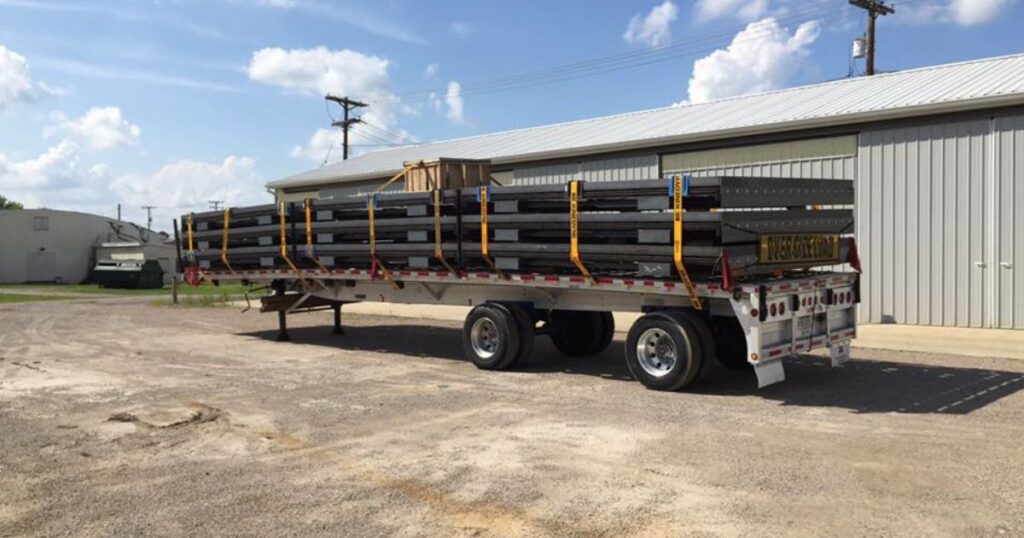
Step 9: Connect Hitch and Check Lights
Now connect the trailer to your tow vehicle. Make sure the hitch is locked, safety chains are attached, and the breakaway cable is clipped in.
Then test all your trailer lights – brake lights, signals, and running lights. Ask someone to stand behind the trailer while you press the brakes and use the blinkers. If you’re alone, use a mirror or a wall to see the reflections.
Don’t skip this step. Your Poor lighting can cause accidents or get you pulled over and earn you a ticket.

Want the Right Trailer for Your Job?
From enclosed to flat deck trailers, find the perfect fit for your next move or haul.
Common Mistakes to Avoid When Loading a Trailer
One of the biggest mistakes people make is placing too much weight at the back of the trailer or loading the cargo imbalanced. This can cause the trailer to sway while you drive, making it hard to control and dangerous even at normal speed.
It might look like a small thing, but trust me, it is one of the fastest ways to end up in serious trouble on the road.
We know why you are here to avoid making the same mistake others have made.
Lets, Check out this video to see exactly what happens when you load your trailer the wrong way.
Here are some other mistakes you should avoid to keep your load safe and your trip smooth:
- Loading more weight than your trailer’s GVWR or your vehicle’s towing capacity
- Unbalanced side-to-side loading by putting more weight on one side than the other
- Forgetting to strap things down properly to secure the load
- Skipping tire pressure checks or not making sure the hitch is locked
- Driving without checking if your trailer lights and signals work
Each of these mistakes can cause problems like damaged cargo, traffic tickets, or even accidents. Taking a few minutes to check everything before you hit the road can save you time, money, and stress later.
